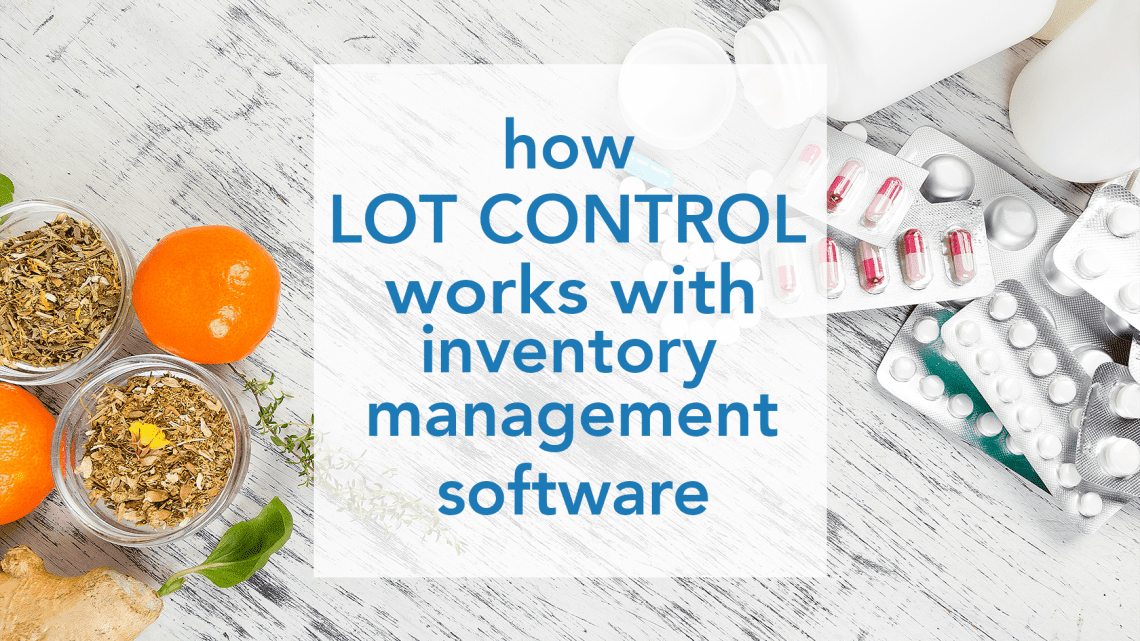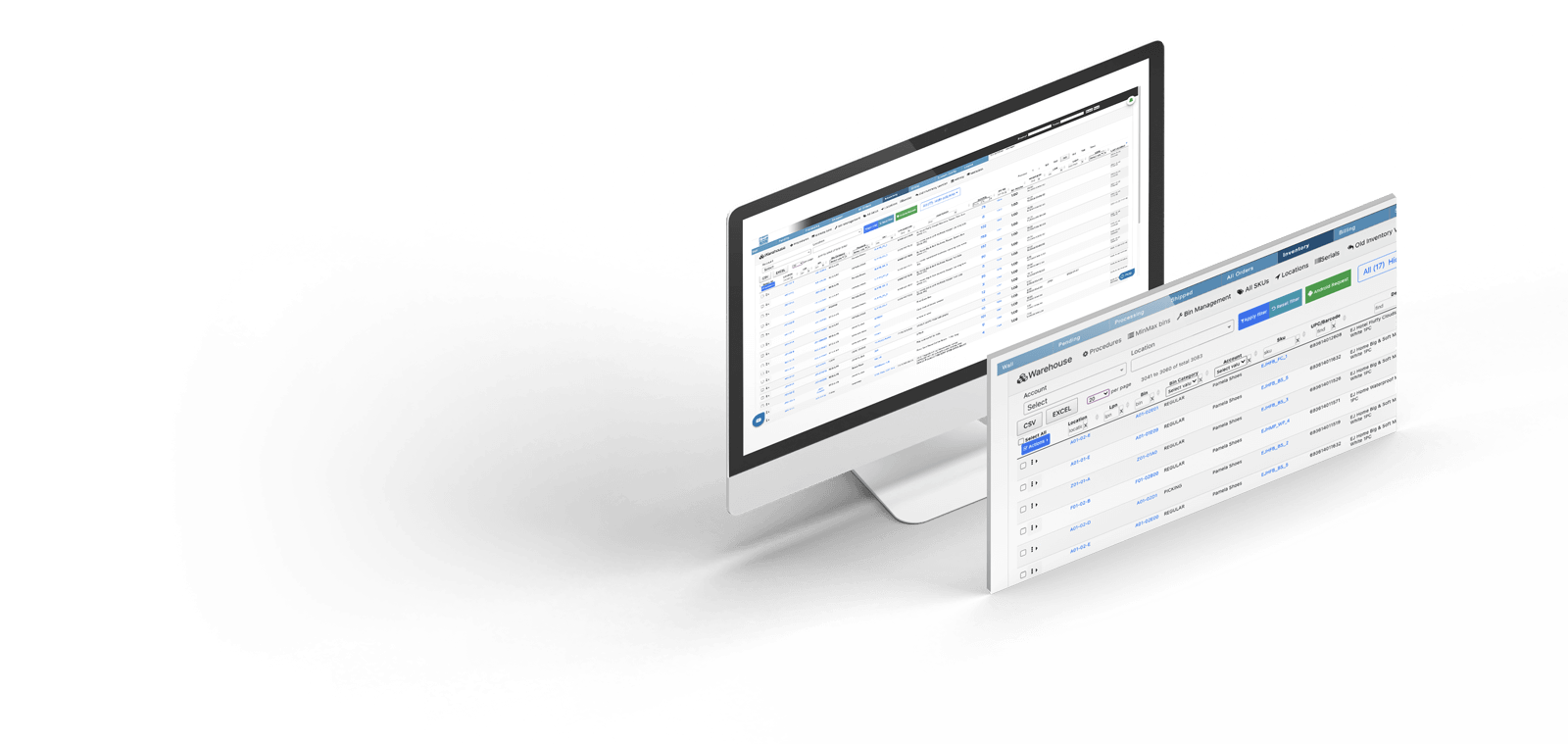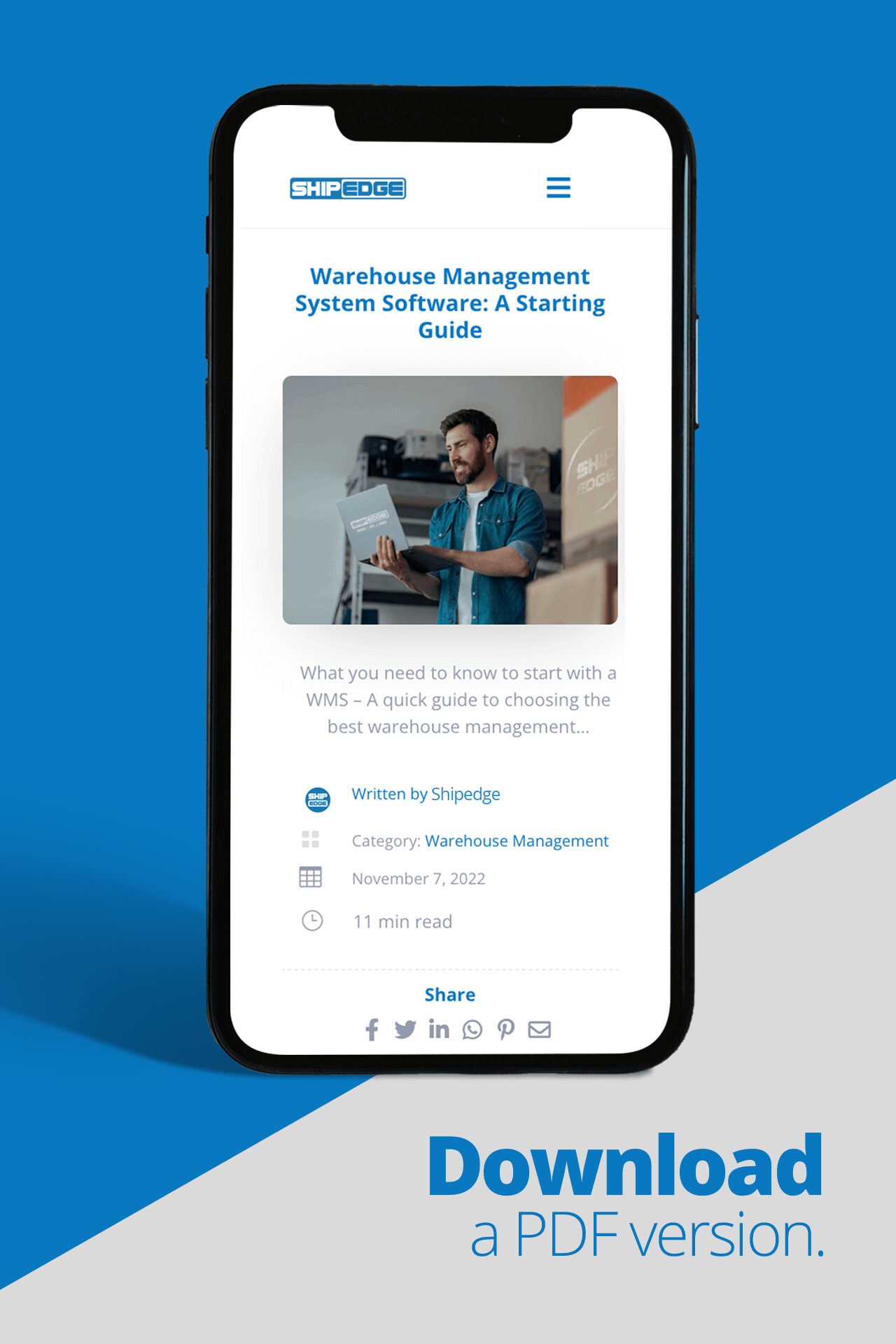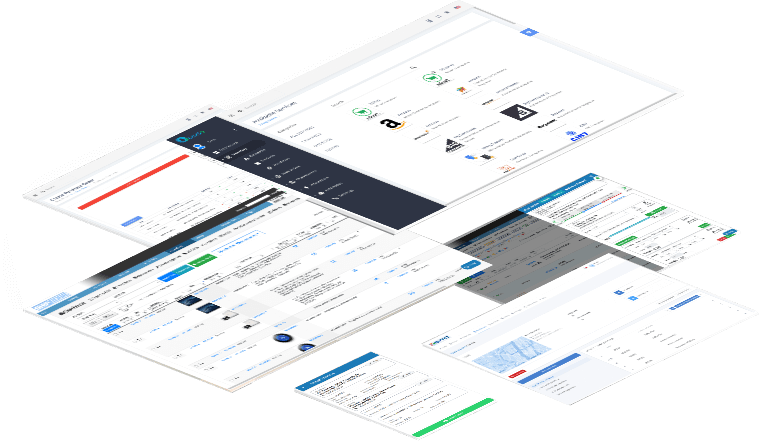In the realm of inventory management, one of the most pressing challenges revolves around the management of perishable goods. Products that expire or rapidly lose value over time pose unique hurdles for businesses. The consequences of mishandling such inventory can result in financial losses, operational inefficiencies, and missed opportunities.
To address these challenges, companies turn to the Warehouse Management System (WMS), which offers a range of tactics crafted to reduce the potential hazards linked with perishable inventory. This article delves into these techniques, shedding light on how they can make a substantial difference in your business operations. This article will present the importance of managing perishable goods in warehousing and explore various techniques to address this challenge effectively. Additionally, we will introduce the tools and solutions offered by Shipedge WMS, which can play a pivotal role in resolving these complex issues and optimizing your perishable inventory management processes.
What is perishable inventory?
Perishable inventory, often referred to as perishable stock, encompasses products that undergo expiration or devaluation over time, rendering them ultimately worthless. This perishability manifests in various ways:
- Gradual quality perishability: This occurs when the quality or relevance of a product diminishes gradually, as exemplified by a market research report becoming less pertinent with time or a floral bouquet slowly wilting;
- Instant perishability: This is observed when a product loses value immediately, such as the depreciation of an airline ticket’s value once the flight takes off;
- Step-function perishability: Some products experience a decline in value resembling a step function. For instance, computer chips progress from state-of-the-art to suitable, usable, and ultimately obsolete with successive generations.
The inherent risk associated with perishable inventory lies in the potential for unsold items to expire with no residual value, resulting in a loss of investment and missed opportunities.
While “perishable inventory” and “perishable stock” are often used interchangeably, they do not always signify the same concept.
Perishable stock typically denotes goods that can be stocked, such as floral bouquets and yogurt.
In contrast, items like rounds of golf and hotel nights are considered perishable inventory but cannot be stored in a refrigerated warehouse like yogurt.
It’s worth noting that not all perishable inventory follows traditional expiration patterns. For instance, in the case of theater seats, buyers seek the heart itself before the curtain rises, not the ticket. Additionally, even durable goods, usually classified as non-perishable, can lose value over time due to degradation or obsolescence.
Determining whether a product is perishable involves assessing the degree of perishability, as there are varying levels. Businesses that cannot carry inventory forward effectively, whether early, quarterly, monthly, or daily. Moreover, it’s crucial to recognize that perishability can arise naturally, such as the unsafe consumption of expired food, or artificially, like the depreciation of car values, when newer models enter the market. Ultimately, there are no rigid rules or cutoffs for categorizing perishable inventory, as it encompasses a spectrum of perishability.
READ MORE: Mastering Lot Control and Lot Numbers in Warehouse Management
What types of industries manage perishable inventory?
Numerous industries contend with perishable inventory, often characterized by short, inherent lifespans.
Organic products, including
- Bread.
- Fresh produce.
- Dairy items: such as yogurt, cheese, milk, and butter.
- Health and beauty goods.
Typically, they fall into this category. Likewise, items necessitating refrigeration, such as pharmaceuticals, exhibit various forms of perishability. A notable instance is the COVID-19 vaccines, which possess a brief shelf life once removed from the freezer.
Technology products face perishability, driven by planned obsolescence or the natural evolution of device capabilities. Products subject to yearly model updates, from automobiles to computer chips, predictably incur some degree of perishability.
Experiential offerings that demand an individual’s presence at a specific time and place are also perishable. Examples encompass rounds of golf, hotel reservations, transportation services, and entertainment tickets. Nevertheless, this conversation won’t extensively explore these, as revenue management strategies for handling intangible inventories differ.
In the realm of business-to-business industries, perishable products are prevalent as well. Some resemble scaled-up versions of business-to-consumer challenges, such as supplying food to restaurants. Others, like advertising slots in daily newspapers or during television broadcasts, present distinctive perishability dynamics.
READ MORE: Seven Vital Warehouse Software Features for E-commerce Warehouses
What is the significance of monitoring the inventory of perishable goods?
Watching various types of stock holds importance, but the meticulous oversight of perishable inventory has even greater significance.
The unutilized stock that reaches its expiration point signifies a total setback for the enterprise, and the operational glitches stemming from frequent occurrences of this nature can lead to severe repercussions.
Inventory tracking substantially diminishes the likelihood of errors leading to inventory expiration.
Furthermore, with regular audits, inventory tracking can promptly uncover issues and offer valuable insights for tracing their origin. In scenarios where each product unit is on a countdown toward its expiration, inventory tracking transforms into a mission-critical endeavor for businesses aspiring to thrive.
Discover how our WMS can improve your business
What type of techniques can I use to manage perishable inventory?
Effectively managing perishable inventory Involves synchronizing the volume and timing of supply and demand.. Merely providing a sufficient quantity of products to satisfy customer requirements is insufficient. Businesses dealing with perishable inventory must fulfill each customer’s needs precisely when they arise, all while avoiding excess inventory that could lead to costly losses due to expiration. In the next sections, we present some strategies to manage perishable inventory.
1 – FIFO
FIFO is “First-In, First-Out,” a method of inventory management and valuation. In the context of inventory, FIFO means that:
The first items added to a stock or inventory are the first ones to be used or sold.
In other words, the oldest inventory items are used or sold before the newer ones. This method is often used for goods with limited shelf life or could become obsolete, such as perishable items or items with rapidly changing technology, like electronics. By using the FIFO method, a business can reduce the risk of holding onto outdated or expired inventory, as it ensures that the older inventory is used or sold before the newer items. FIFO is generally considered more intuitive and closely reflects the actual flow of goods in many industries.
2 – FEFO
FEFO stands for “First Expired, First Out,” a variation of the FIFO.
FEFO is particularly relevant in industries where products have a restricted duration of viability and or become obsolete, such as the pharmaceutical and food industries.
Under the FEFO system, the oldest items in inventory are the first to be used or sold based on their expiration dates. This ensures that items with the earliest expiration dates are given priority to minimize the risk of items expiring and becoming unsellable or unsafe to use.
FEFO is especially important for businesses dealing with perishable goods, medications, or products where safety and quality concerns are closely tied to expiration dates. By implementing FEFO, these businesses can reduce the likelihood of losses due to expired inventory while maintaining product quality and safety standards.

3 – Inventory Tracking
Inventory tracking involves the meticulous monitoring of inventory levels. This entails maintaining a comprehensive understanding of your current inventory, including items in transit, quantities of each inventory type, their respective locations, and vital details about each unit, such as expiration dates. Additionally, it entails tracking the origins and destinations of inventory items when they are sold.
Some inventory tracking methods include payment tracking linking financial records to purchased and sold units. Ideally, every event involving an inventory unit should be documented, a task well-suited for advanced inventory management technology.
An effective inventory tracking system provides up-to-the-minute data, offering real-time answers to critical questions like:
- How many items are set to expire in the next week?
- What is the anticipated stock of unexpired units for tomorrow?
Inventory tracking furnishes essential data for informed decision-making, reducing the likelihood of costly errors, such as overordering or failing to fulfill customer orders.
Proactively, if you identify surplus inventory nearing its expiration date, you can initiate a discounted promotion to minimize losses and recover some of the Cost of Goods Sold (COGS) instead of writing it off entirely.
Furthermore, robust inventory tracking is a diagnostic tool for identifying process issues like errors or theft. When you are unaware of your expected inventory levels, it becomes challenging to identify discrepancies and even harder to investigate potential incidents.
READ MORE: Optimize Your Operations with Serial Number Tracking in 2023
4 – Inventory Auditing
In an ideal scenario, inventory tracking should capture all actions involving perishable stock, including purchases, movements, sales, write-offs, giveaways, and other activities. However, in reality, not all inventory events are accurately recorded.
Discrepancies often arise from human errors, such as incorrect data entry or variations in execution, like inconsistent pouring in a restaurant. Additionally, discrepancies can result from system limitations or intentional actions, such as theft or damage.
The remedy is routine inventory auditing, or cycle counting, where you physically examine your inventory, compare it to your records, and investigate any discrepancies. This practice is particularly vital for perishable inventory, as errors and theft can deplete actual stock, and some perishable items may expire prematurely due to various factors like temperature during transportation rotation. Recognizing this possibility is crucial for maintaining adequate supplies and pinpointing process issues within storage and supply chains.
READ MORE: Prepare for holiday fulfillment
5 – Demand Forecasting
Demand forecasting proves indispensable in effectively managing perishable inventory, especially in sectors like food and beverage, where items can expire swiftly, and replenishment can’t always match sudden shifts in demand.
For instance:
- A restaurant cannot order ingredients on the spot when a large group arrives; preparation must be done in advance.
Through accumulated data and experience, businesses identify peak seasons, busy days, and even peak hours, as well as recognize factors like special events that influence demand. Crafting demand forecasts, often closely aligned with sales projections, empowers businesses to plan proactively. In the absence of company-specific data, industry forecasts and awareness of broader trends can serve as a foundation, with adjustments made for local peculiarities. As businesses gain experience and enhance data tracking, their forecasting capabilities become more robust. By integrating sales forecasts with inventory tracking and audits, businesses gain precise insights into optimal order quantities from suppliers, meeting customer demand while minimizing wastage.
Another effective method for forecasting demand, although less formal, relies on nurturing strong customer relationships. The deeper a business understands its customers, the better it can anticipate their needs. Furthermore, well-established relationships encourage customers to communicate changes in their requirements in advance. This underscores the importance of valuing customer relationships and feedback, particularly for businesses dealing with perishable inventory.
READ MORE: 7 Tips on Preparing for the E-Commerce Holidays
6 – Establish Various Areas
Establishing various dedicated areas can be a strategic technique for managing perishable inventory effectively. These areas can include:
- Temperature Zones: Designate specific zones within your storage facility for different temperature ranges, such as frozen, refrigerated, and ambient, to maintain product integrity.
- Priority Storage: Create areas for high-demand or short-shelf-life items to ensure quick access and turnover, reducing the risk of expiration and waste.
- Quarantine Zone: Set up a separate area for incoming products to be inspected and tested for quality and safety before integration into the main inventory.
- Stock Rotation Zones: Design spaces for stock rotation and consolidation, allowing for the transfer of products from slower-moving to high-turnover zones.
- Waste Sorting Area: Establish a dedicated space for sorting and disposing of expired or damaged items, maintaining cleanliness and hygiene.
- Production and Processing Zones: If applicable, designate areas for in-house production or processing of perishable items, such as kitchens or assembly lines.
- Expiry Date Monitoring: Implement a system to regularly monitor expiry dates within each area to ensure the timely use or removal of products.
- Inventory Tracking Software: Utilize software to categorize and manage perishable items in different areas, providing real-time updates on inventory levels and expirations.
- Staff Training: Train your staff to understand the importance of these areas and follow proper handling procedures to minimize errors.
By creating and effectively utilizing these distinct areas, you can minimize waste, enhance product quality, and improve overall efficiency in managing perishable inventory.
7 – Embrace Technological Advancements
All the strategies discussed thus far become more accessible and potent when augmented with information technology. While businesses typically commence with spreadsheets, investing in more advanced inventory management, such as Shipedge WMS can yield significant benefits, even for small-scale operations like single-location retail businesses. Robust systems simplify the integration of data and enable comprehensive planning, encompassing both financial and operational aspects.
Real-time or near-real-time technology systems prove especially valuable for swift adaptations, offering the advantage of receiving immediate alerts for any issues that may arise. For instance, in negotiations with customers seeking better pricing, a proficient inventory management system can precisely determine the number of units suitable for discounting and identify those with ample shelf life to wait for more favorable offers.
READ MORE: Maximize Your E-Commerce Success with Real-Time Inventory Management
8 – Safety Stock
Safety stock is a concept applicable to manufacturers, retailers, and individuals alike. It involves maintaining a surplus of items beyond anticipated demand, as a precaution for unforeseen circumstances. Examples include manufacturers producing slightly more than customer orders, stores storing extra inventory in their backrooms, and individuals packing additional sunscreen and socks for a trip. Safety stock prepares for various scenarios, both positive, like an unexpected surge in demand, and negative, such as unforeseen events rendering some inventory unusable.
However, when dealing with perishable inventory, the concept of safety stock becomes less straightforward and riskier. Stockpiling a few extra units that are unlikely to sell quickly can lead to deliberate waste, as these units are expected to deteriorate.
Manufacturers of durable goods often employ formulas to calculate their safety stock levels, ensuring they never run out of inventory in case of customer demand. If failing to meet customer demand would be catastrophic for your business, maintaining a substantial amount of safety stock may be necessary, even for perishable inventory. Nevertheless, this approach can result in discarding valuable inventory to avoid telling one customer, “Sorry, we’re temporarily out of stock.”
Determining the appropriate level of safety stock depends on each business’s unique circumstances. For example, a frozen yogurt shop running out of a flavor has minimal negative consequences for customers, whereas a hospital facing a shortage of O-negative blood could be a life-or-death situation. The more severe the consequences of running out of a product, the greater the need for safety stock. However, with perishable inventory, the balance typically lies between zero safety stock and the quantity that would be stocked if the inventory were nonperishable.
READ MORE: The Power of Kitting: Create Attractive E-commerce Summer Holiday Offers with Kitting
9 – Build Supplier Relationships
All the strategies discussed thus far become more accessible and potent when augmented with information technology. While businesses typically commence with spreadsheets, investing in more advanced inventory management software can yield significant benefits, even for small-scale operations like single-location retail businesses.
Robust systems simplify data integration and enable comprehensive planning, encompassing financial and operational aspects. Real-time or near-real-time technology systems prove especially valuable for swift adaptations, offering the advantage of receiving immediate alerts for any issues that may arise. For instance, in negotiations with customers seeking better pricing, a proficient inventory management system can precisely determine the number of units suitable for discounting and identify those with ample shelf life to wait for more favorable offers.

10 – Diversify Supply Chains
Ensuring supply chain diversification has always held significance, but in recent years, it has become absolutely imperative for numerous businesses. Dependence on a single supplier for a critical aspect, and input without alternative options creates a singular point of vulnerability capable of disrupting an entire company’s operations.
There are three distinct dimensions of diversity to contemplate when striving to fortify a supply chain:
- Redundancy: Incorporating multiple suppliers for critical components establishes redundancy, providing a safety net in case one supplier experiences a significant reduction in capacity. While many businesses recognize this need when dealing with rare, vital inputs crucial for high-quality products, they sometimes overlook everyday, essential inputs under the assumption that they are readily available. The past year demonstrated that perishable inventory could expire multiple steps away from the end consumer due to a shortage of containers for shipping. Businesses have learned the importance of building redundancy into sourcing commonplace items like boxes, jars, and bags, as it can be as critical as having contingency plans for specialty inputs. An impeccable product serves little purpose if it cannot reach customers.
- Flexibility: The ability of suppliers to adapt to changes within your business is crucial. This may be less pressing during normal circumstances, as changes tend to occur with careful planning. However, especially in the early stages of the COVID-19 pandemic, some changes were abrupt and involuntary, and inflexible supply chains resulted in shortages. For example, a company accustomed to producing 20-pound bags of shredded cheese for restaurants struggled to shift to producing 1- or half-pound bags for retail consumers as dining habits shifted towards more at-home consumption.
- Geography: Geographic diversity within supply chains is a form of resilience that is gaining importance. Sudden alterations in political circumstances, such as tariff level changes, can significantly disrupt business models. Additionally, regional disturbances stemming from natural disasters like extensive wildfires and hurricanes are becoming more frequent and severe. A business becomes more vulnerable to a single adverse event when its sourcing of critical components becomes heavily concentrated in a particular geographic area.
It’s important to recognize that diversifying supply chains comes with associated costs and potential increases in management complexity, which may reduce economies of scale. However, for perishable inventory, diversification takes on heightened importance because supply chain disruptions can result in substantial product losses, not just delivery delays.
What are the benefits of implementing an inventory perishable warehouse software management?
The implementation of perishable inventory comes with several associated advantages. Let’s take a look at some of them below.
1 – Request Sorting and Categorization
Utilizing software for managing inventory shelf life offers the advantage of making exact forecasts for future demand. This capability stems from the availability of real-time insights and analytics as your guiding tools.
Furthermore, it lets you oversee your entire inventory through a unified dashboard. This, in turn, allows for the identification of swiftly moving products and items at risk of becoming obsolete.
Moreover, it facilitates the recognition of inventory performance variations throughout different seasons or periods of the year. Nonetheless, to optimize your demand planning efforts, it is imperative to:
- Establish well-defined boundaries and logically group forecasts.
- Factor in your available resources when conducting demand planning.
- Clearly define your objectives.
Following these instructions can improve your resource capacity planning and uncover opportunities to minimize lead times.
READ MORE: Maximize Your E-Commerce Success with Real-Time Inventory Management
2 – Batch Numbers
Implementing a perishable inventory control system enables the utilization of batch numbers during manufacturing. This facilitates convenient monitoring of the real-time whereabouts of your products, whether they are on the shop floor or elsewhere within the supply chain. Moreover, it expedites batch recalls when necessary.
Furthermore, this system allows for precise tracking of batch expiration dates for your products. Establishing end-to-end transparency and traceability will enhance supplier rapport by promoting mutual accountability.
Lastly, batch numbers aid in distinguishing your products, even if they may outwardly resemble one another due to differing production processes.
READ MORE: Simplifying Serial Numbers, Lot Numbers, and Batch Numbers
3 – Safety Stock and Reorder Points
If you’re a business owner dealing with perishable inventory, introducing an inventory management system can provide you with close surveillance of your inventory. This system incorporates barcode scanning functionality, enabling real-time tracking of various inventory types. This, in turn, facilitates enhancements in the following areas:
Management of raw material inventory
- Supervision of work-in-progress (WIP) inventory
- Oversight of finished goods inventory
- Gaining greater command over your perishable inventory equips you to trim operating expenses and enhance production efficiency through real-time awareness of inventory locations and issue-prone areas.
Gaining greater command over your perishable inventory equips you to trim operating expenses and enhance production efficiency through real-time awareness of inventory locations and issue-prone areas. Consequently, this contributes to bolstering your operational income.
4 – Improved Manufacturing Lead Time
Another benefit of integrating a customized inventory management system into your business operations is its capacity to streamline your manufacturing lead time. This is achieved by providing your team with a clear understanding of tasks and their respective timelines.
Moreover, it offers the following advantages:
- Enhancement of production planning and scheduling processes.
- Storage of comprehensive bill of materials (BOMs).
- Precise definition of operations.
- Automation of manufacturing cost calculations and related functions.
In conclusion, integrating a tailored inventory management system represents a strategic move for businesses aiming to enhance their operational efficiency. Reducing manufacturing lead time, facilitated by task clarity and timeline awareness, is a significant advantage. Furthermore, the system’s multifaceted benefits encompass improved production planning, the convenience of comprehensive bill of materials storage, precise operation definitions, and the automation of vital manufacturing cost calculations. These collective advantages not only optimize internal processes but also contribute to the overall competitiveness and success of the organization in today’s dynamic business landscape.
So far, we’ve learned about the main advantages of perishable inventory management in warehouses for most companies. Finally, we conclude this article by explaining how Shipedge WMS can serve as the solution to assist you in managing all your inventory, thereby improving the satisfaction of all stakeholders associated with the company.

Manage Perishable Inventory with Shipedge WMS
Effectively managing perishable inventory is paramount for businesses across various industries. The consequences of mishandling such inventory can lead to financial losses and operational disruptions. In this article, we’ve explored the significance of perishable inventory, the types of industries that manage it, and various techniques to manage it efficiently.
To tackle the challenges associated with perishable inventory, it’s essential to embrace technological advancements and leverage specialized tools and solutions. One such solution is the Shipedge Warehouse Management System (WMS), which offers a range of technologies to improve inventory techniques. Here are some of the technologies that Shipedge provides to enhance perishable inventory management:
- Inventory Tracking Software: Shipedge’s WMS offers robust inventory tracking capabilities, providing real-time data on inventory levels and expirations. This ensures timely use or removal of products, reducing the likelihood of costly errors.
- Batch Numbers: With Shipedge, you can easily track and manage batch numbers during production, allowing for precise location tracking and expiration date monitoring. This enhances traceability and accountability throughout the supply chain.
- Safety Stock and Reorder Points: Shipedge’s WMS helps in optimizing safety stock levels and setting reorder points for perishable items. This ensures that you maintain an adequate supply without risking excessive waste.
- Improved Manufacturing Lead Time: The system streamlines manufacturing lead times by providing clear task definitions and timelines. It enhances production planning, stores comprehensive bills of materials, and automates manufacturing cost calculations, contributing to operational efficiency.
- Request Sorting and Categorization: Shipedge’s WMS enables precise demand forecasting by offering real-time insights and analytics. It helps you categorize forecasts, factor in available resources, and define clear objectives for optimized demand planning.
- Supplier Relationship Management: Shipedge facilitates supplier relationship management, helping you diversify supply chains and establish redundancy, flexibility, and geographic diversity in sourcing critical components. This minimizes vulnerabilities to disruptions.
- Diverse Areas: Shipedge supports the creation of various dedicated areas within your storage facility, such as temperature zones, priority storage, and quarantine zones, enhancing product quality and minimizing waste.
By embracing these advanced technologies and techniques provided by Shipedge’s Warehouse Management System, businesses can mitigate the risks associated with perishable inventory, reduce waste, improve supply chain resilience, and ultimately optimize their perishable inventory management processes. In today’s dynamic business landscape, these solutions are indispensable for ensuring competitiveness and success. Don´t waste more time, book a consultation now with our team and get a full guide on how Shipedge WMS could make a difference to your business. See you, in the next article.
Discover how our WMS can improve your business













0 Comments